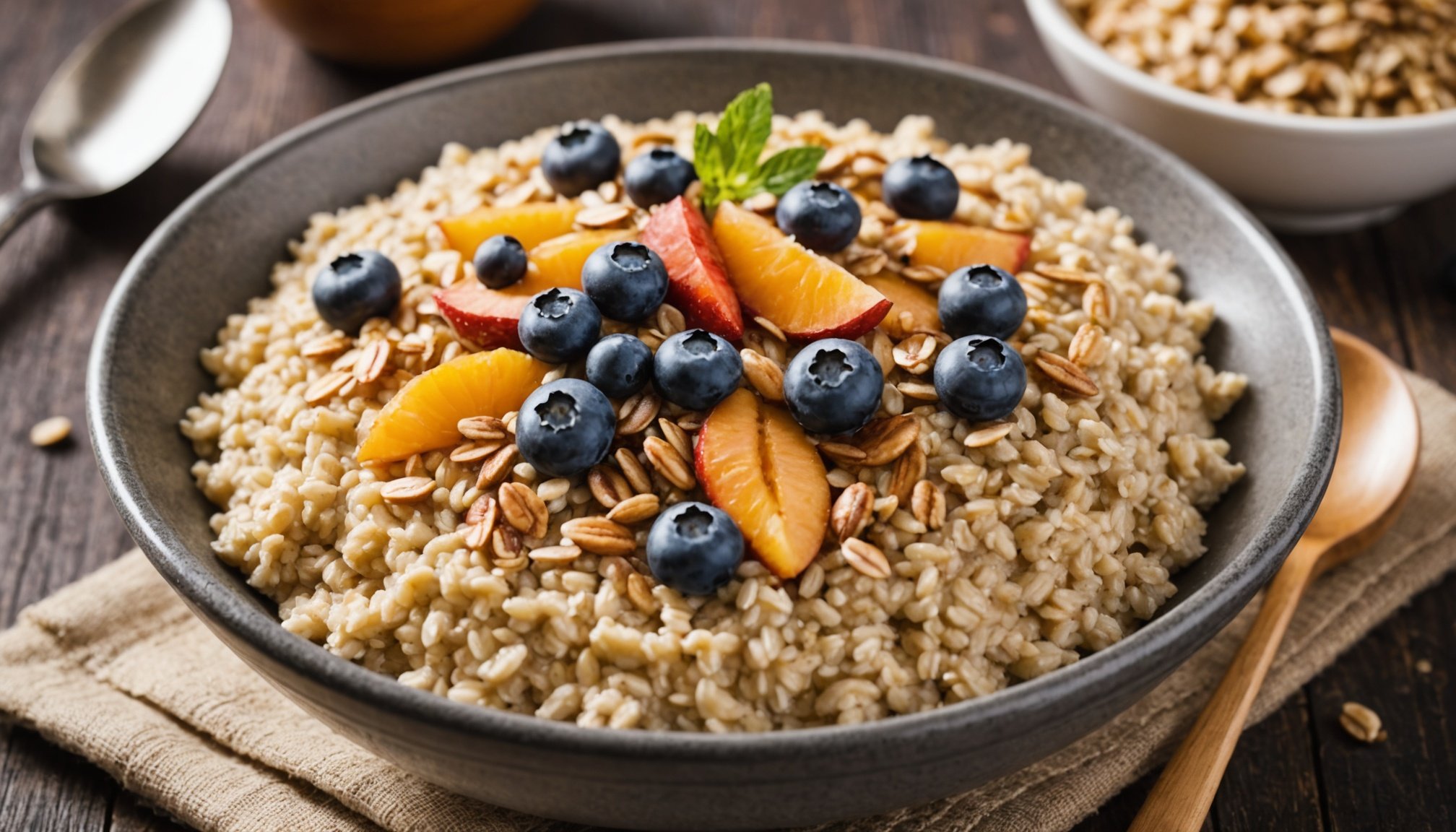Overview of Cholesterol and Health Risks
Understanding cholesterol levels is crucial for maintaining overall health, especially in adults over 40. Cholesterol, a waxy substance found in the bloodstream, is essential for building cells. However, having excessively high cholesterol can lead to serious health risks.
Cholesterol is typically measured in milligrams per deciliter (mg/dL), with LDL (Low-Density Lipoprotein) and HDL (High-Density Lipoprotein) being the primary readings. LDL is considered “bad” cholesterol, as it can lead to plaque buildup in arteries, while HDL is deemed “good,” aiding in removing LDL from the bloodstream.
Also to discover : Exploring Powerful Non-Pharmaceutical Approaches for Chronic Pain Relief in UK Adults
For adults over 40, the risks associated with high cholesterol become more pronounced. As cholesterol levels rise, so does the risk of developing heart disease, the leading cause of death globally. Elevated levels can lead to atherosclerosis, a condition characterized by narrowed arteries that impede blood flow, thereby increasing the likelihood of heart attacks and strokes.
The connection between cholesterol and heart disease is clear; higher LDL and lower HDL levels can significantly affect heart disease metrics. Therefore, managing cholesterol through lifestyle changes, medication, or both is vital for reducing cardiovascular risks and promoting long-term health.
In the same genre : Boost Your Activity: Creative Ways for UK Adults in Sedentary Jobs to Stay Active Every Day
The Nutritional Profile of Oatmeal
Oatmeal is a nutritional powerhouse, loaded with essential nutrients that benefit health. A stand-out feature of oatmeal is its high content of soluble fiber, particularly beta-glucan. This specific type of fiber has been noted for its role in managing cholesterol levels effectively.
Key Nutrients in Oatmeal
Oatmeal provides a variety of nutrients, including B vitamins, iron, and magnesium, which contribute to overall well-being. Furthermore, its rich soluble fiber content aids in improving digestion, making it a healthy choice for many.
Importance of Soluble Fiber
Soluble fibers, such as those found in oatmeal, have the ability to dissolve in water and form a gel-like substance. This aids in lowering cholesterol levels by binding to cholesterol-rich bile acids in the intestines, allowing them to be excreted from the body.
Focus on Beta-Glucan
Beta-glucan, a key soluble fiber in oatmeal, plays a significant role in heart health. It has been scientifically proven to reduce LDL cholesterol, the “bad” cholesterol, which can lower cardiovascular risk. Consuming oats regularly ensures you reap these heart-friendly benefits, making oatmeal an advantageous addition to a balanced diet.
Scientific Evidence Supporting Oatmeal for Cholesterol Management
Scientific research highlights the impact of oatmeal on cholesterol reduction through various oatmeal studies. A noteworthy study involving adults over 40 demonstrated a significant decline in LDL cholesterol levels. This demographic focus ensures that the results are pertinent to those most at risk for heart-related issues as they age.
When discussing the value of evidence-based research, it’s essential to consider the sample sizes and demographic relevance. Large sample sizes, usually composed of diverse participants, offer results that are both statistically significant and widely applicable. For example, studies involving thousands of participants yield more reliable insights than those with smaller cohorts.
The applicability of research findings often hinges on the demographic relevance. For adults over 40, these scientific studies provide actionable information for cholesterol management. Research typically indicates that regular consumption of oatmeal may contribute to better heart health by reducing LDL cholesterol, providing a valid dietary strategy for this age group.
By analyzing various scholarly investigations, a clearer picture emerges of oatmeal’s role in cholesterol reduction, reinforcing its inclusion in a heart-healthy diet. Such insights allow individuals to make informed nutritional choices, grounded in scientific research.
Recommended Portion Sizes and Consumption Guidelines
Understanding the portion sizes for oatmeal is crucial for effective cholesterol management. Dietary experts recommend a serving of about 40 grams, equivalent to half a cup of dry oats. This portion aligns with the dietary recommendations for balanced nutrition. Consuming this amount regularly aids in maintaining a healthy cholesterol level, especially when paired with a heart-friendly diet.
In the UK, dietary guidelines for adults over 40 suggest incorporating oats due to their heart health benefits. Oats are rich in beta-glucan, a soluble fibre proven to lower cholesterol. For individuals over 40, integrating oatmeal into daily routines can be beneficial. Start by replacing white bread or sugary cereals with oatmeal during breakfast. Additionally, oatmeal can be a practical substitute in baked goods, offering a healthier option without sacrificing taste.
When considering oatmeal consumption, it’s crucial to balance it with other nutritious foods like fruits, nuts, and seeds. These additions not only enhance flavour but also increase the meal’s nutritional value. Whether it’s a quick breakfast or a savoury dish, oatmeal provides versatility that fits various dietary needs while supporting overall heart health.
Popular Oatmeal Preparation Methods
Oatmeal, a versatile and nutritious breakfast staple, can be prepared using a variety of cooking methods. Each method can subtly impact the nutritional value and taste of the oatmeal, providing flexibility and variety in your morning routine.
Cooking Methods and Their Nutritional Impact
There are several ways to cook oatmeal, including stovetop, microwave, slow cooking, and overnight soaking. Stovetop cooking allows for a delightful texture but requires more time and attention. The microwave method is quick and convenient, perfect for busy mornings, though some say it may slightly alter the texture. Slow cooking helps retain moisture, making the oats incredibly creamy while preserving their nutrient profile. Overnight soaking, often referred to as “overnight oats,” involves soaking raw oats in liquid, allowing them to absorb nutrients fully over time.
Recipes and Flavor Enhancements
There are numerous oatmeal recipes that cater to various tastes and dietary needs. For a healthy twist, consider mixing oats with almond milk, chia seeds, and fresh berries. To enhance flavor without unhealthy additives, try incorporating spices like cinnamon, nutmeg, or a splash of vanilla extract. For added crunch, sprinkle some nuts or seeds on top. With these approaches, oatmeal becomes not just a meal, but a delightful culinary experience.
Addressing UK-Specific Dietary Considerations
Navigating UK dietary guidelines for oatmeal consumption is essential for anyone aiming to follow a balanced diet. The guidelines emphasize the importance of whole grains, including oats, due to their high fiber content and ability to lower cholesterol. They recommend opting for oats as a breakfast staple to enhance heart health.
In the UK, a variety of oat products are readily available, making it easy for consumers to find options that suit their needs. Commonly found oat products include rolled oats, steel-cut oats, and instant oatmeal. These can be purchased easily in supermarkets and health food stores across the country.
It is crucial to select high-quality oatmeal to maximize nutritional benefits. Look for products labeled as whole or organic oats, as these retain more natural nutrients. Checking product labels for unnecessary additives or excessive sugar is also advisable.
To source the best oatmeal in the UK, explore local farmers’ markets which often sell locally produced oats. Supporting local producers can not only ensure fresh products but also reduce environmental impact. With these tips, you can enjoy oatmeal as per UK standards while reaping its health benefits.











